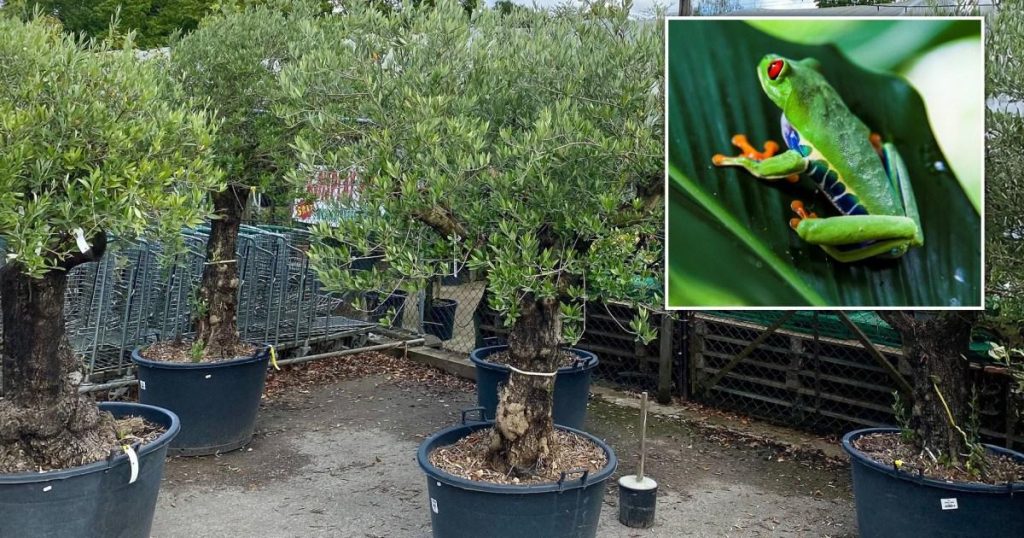The global trade in ornamental plants, while aesthetically pleasing and economically beneficial, presents a significant and growing biosecurity risk, serving as a hidden pathway for the introduction of invasive species, pests, and diseases into countries like the UK. This issue extends far beyond the occasional headline-grabbing discovery of a snake or lizard nestled amongst imported foliage; it encompasses a vast array of organisms, from microscopic fungi and insects to larger reptiles and amphibians, surreptitiously entering new environments with potentially devastating consequences. The fast-paced nature of these shipments, coupled with the sheer volume of plant material being transported, makes effective screening and detection incredibly challenging, leaving ecosystems vulnerable to a constant influx of unwanted hitchhikers.
The risks are multifaceted and extend beyond the immediate introduction of non-native species. The transportation of plants across continents carries with it the potential for introducing plant-specific pathogens and diseases, which can decimate native flora. Insects, often unseen passengers on these botanical journeys, can act as vectors for diseases affecting both plants and animals, including humans. Furthermore, the increasing interconnectedness of global trade networks creates opportunities for the spread of agricultural pests, posing a significant threat to food security. The warmer temperatures resulting from climate change exacerbate these risks, providing more favourable conditions for the survival and proliferation of introduced species, including disease-carrying insects like mosquitoes.
The sheer scale of the problem is daunting. Experts warn that the visible introductions of larger animals like snakes and lizards represent only a fraction of the actual number of organisms being inadvertently imported. The smaller, less conspicuous organisms, such as insects and fungi, are far more likely to slip through current biosecurity measures undetected, yet they often pose the greatest ecological threat. These organisms can disrupt delicate ecosystems, outcompete native species for resources, and introduce novel diseases, potentially leading to widespread ecological damage and economic losses. The complexity of the plant trade, with its numerous actors and diverse pathways, further complicates efforts to effectively manage these risks.
Compounding the issue is the illegal trade in protected plant species. Driven by high demand and lucrative profits, unscrupulous actors often circumvent regulations, stripping rare and endangered plants from their natural habitats and smuggling them into other countries. This illicit activity not only contributes to biodiversity loss in source countries but also increases the risk of introducing invasive species and diseases into recipient countries. Enforcement of existing regulations is challenging, particularly given the scale of the global plant trade and the often-clandestine nature of these illegal operations. Strengthening international cooperation and collaboration among regulatory agencies is crucial to combat this illegal trade and mitigate its associated risks.
The environmental consequences of this hidden invasion extend beyond the introduction of non-native species. The transport of plants and soil can also introduce microplastics and agrochemicals into new environments, contaminating soil and water resources. These pollutants can have long-lasting detrimental effects on ecosystems, impacting soil health, water quality, and the overall biodiversity of affected areas. Moreover, the carbon footprint associated with transporting cut flowers and other plant materials across continents is substantial, contributing to greenhouse gas emissions and exacerbating climate change, which in turn further facilitates the spread of invasive species.
Addressing this complex challenge requires a multi-pronged approach. Strengthening biosecurity measures at borders is paramount, including enhanced inspection protocols, improved detection technologies, and increased capacity for rapid response to identified threats. However, border control alone is insufficient. Promoting sustainable practices within the horticultural industry is essential, including encouraging the use of certified nurseries and suppliers that adhere to strict biosecurity guidelines. Raising awareness among consumers about the potential risks associated with imported plants can also drive demand for more sustainably sourced plant material. Furthermore, fostering collaboration between researchers, policymakers, and industry stakeholders is crucial to developing effective strategies for managing the risks associated with the global plant trade and protecting the integrity of ecosystems worldwide. This collaborative effort should focus on improving risk assessment protocols, developing innovative detection methods, and implementing effective control strategies to minimize the unintended introduction of invasive species, pests, and diseases through the plant trade. Ultimately, a comprehensive and coordinated approach is needed to ensure that the beauty and economic benefits of the global plant trade do not come at the expense of ecological health and biodiversity.











